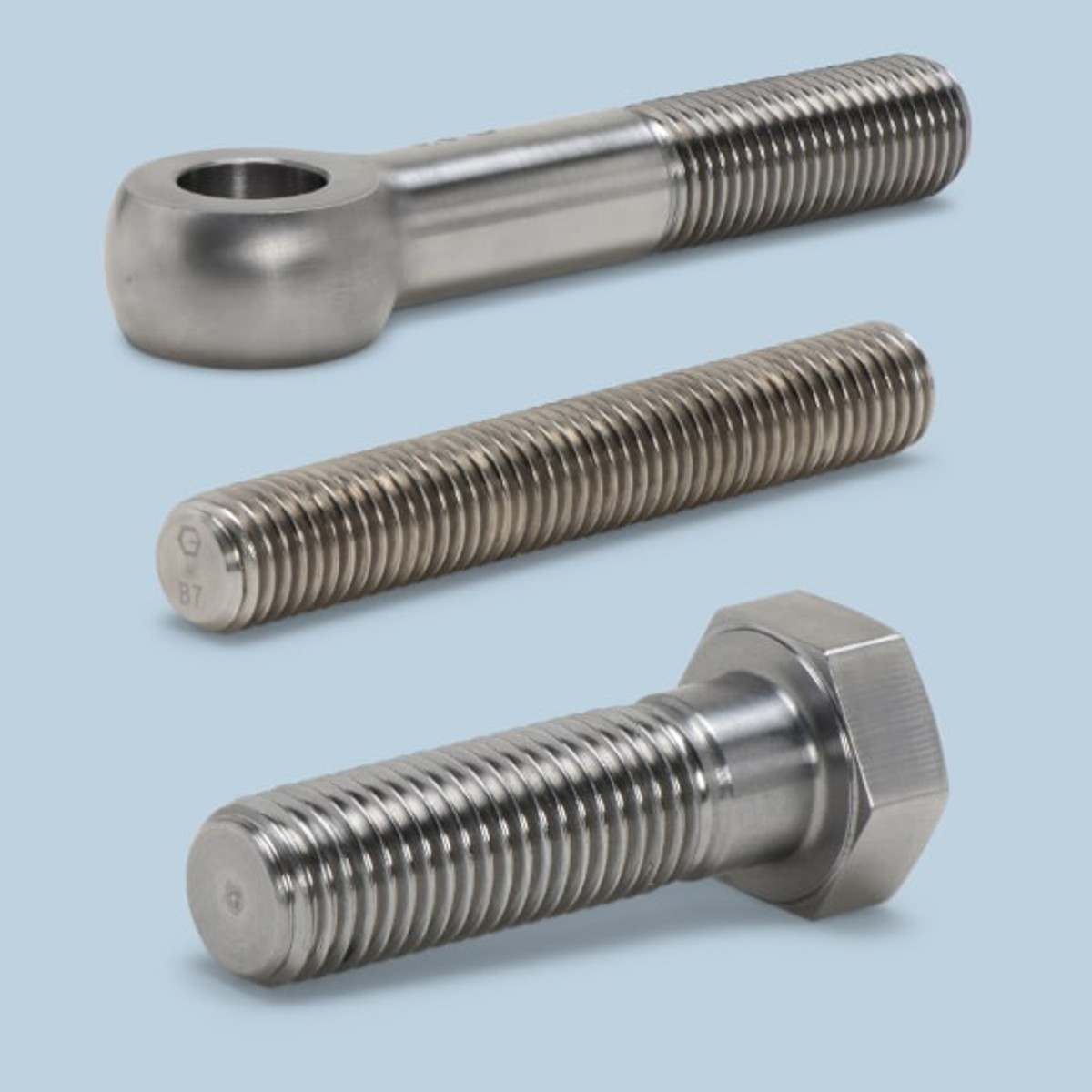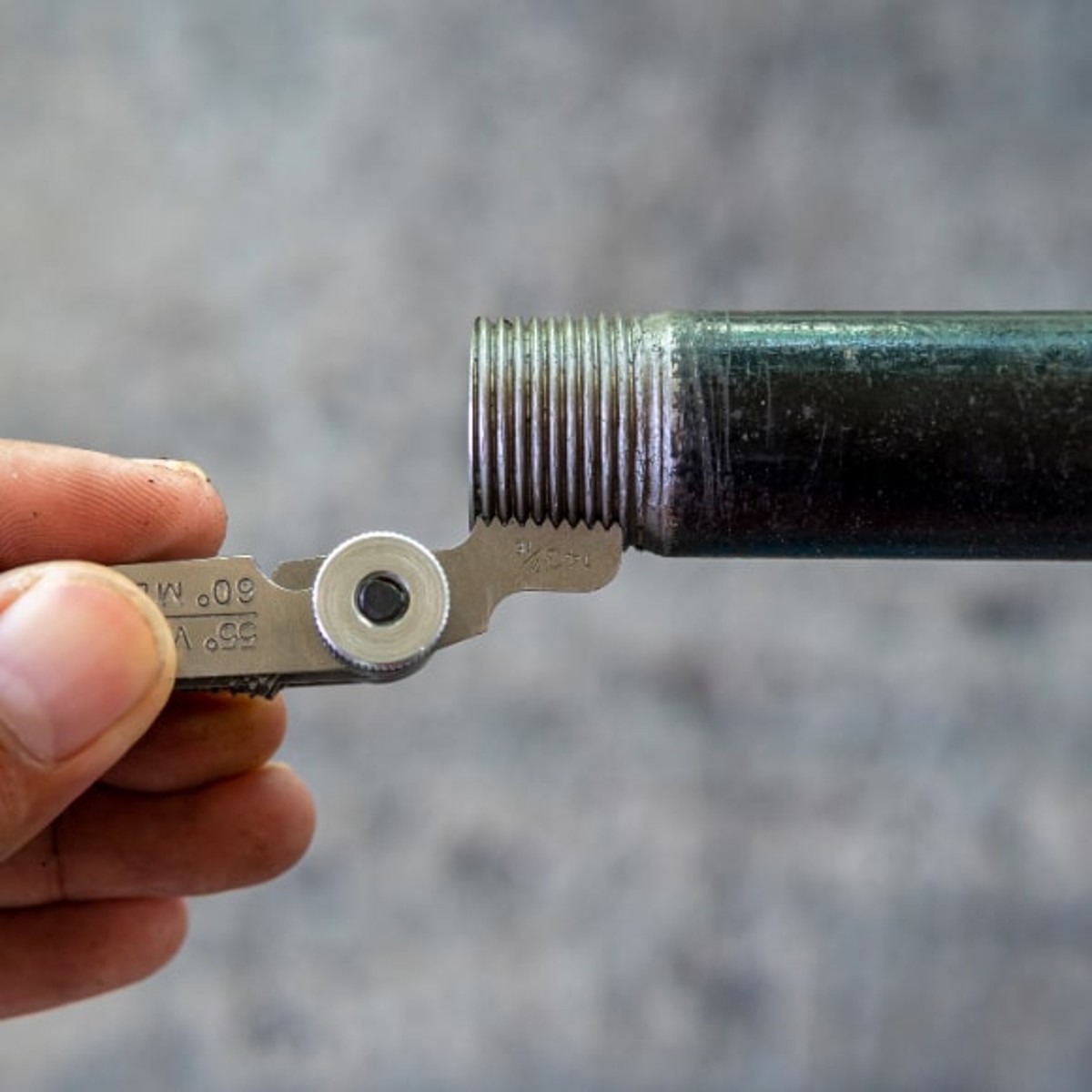
no chips | lower material consumption
no chips | lower material consumption

Thread production for screws and fasteners
Threads are produced at Sonderschrauben Güldner using two manufacturing methods: cutting (thread cutting) or non-cutting (thread rolling or thread forming).
Thread rolling is particularly preferred in large-scale production, since it offers technical advantages such as a smooth surface, increased strength and continuous material fibers. This thread production process is also efficient due to the fact that no material is lost through chips.
Thread cutting is mainly used for turned parts and milled parts, since these have already been produced using machining processes.
Thread rolling
Thread rolling is a non-cutting manufacturing process for producing threads using cold forming. The profile is rolled into the surface of the corresponding blank. According to DIN 8580, thread rolling falls under the category of forming, or more precisely, pressure forming and specifically rolling.
The principle of forming is based on the generation of compressive stresses by one or more tools that are applied onto the workpiece. This process is significantly faster and more cost-efficient in large-scale production than other methods of thread production, in particular thread cutting. Knurling and serrations can also be produced using this process.
All materials with a minimum elongation of 6% and a maximum tensile strength of 1400 N/mm² can be processed with thread rolling. This also includes high-alloy steels, brass and special aluminum alloys. However, particularly brittle (e.g. gray cast iron) and extremely soft materials (e.g. lead) as well as plastics cannot be rolled.
Thread rolling offers a number of advantages in thread production:
- Cost-efficient for large quantities compared to other thread production methods
- Particularly suitable for difficult-to-machine metals and their alloys
- Grain boundaries are not interrupted (unbroken material fiber)
- Cold forming leads to surface hardening (higher strength)
- Press-polished thread flanks (smooth surface)
- Higher wear resistance
- Reduced notch sensitivity
- No chips, therefore less material required
When you view and play embedded videos on www.gueldner.com, the provider (YouTube) may be able to store your access and analyze your behavior. If you activate the content, i.e. agree to view and play it, a cookie is placed on your computer to record that you have agreed to this in your browser. This cookie does not store any personal data.
For more information, please see our privacy policy and cookie page.
You can also use this link to access the video directly on the plattform of the provider: https://youtu.be/UC2LV0W3fN4
When you view and play embedded videos on www.gueldner.com, the provider (YouTube) may be able to store your access and analyze your behavior. If you activate the content, i.e. agree to view and play it, a cookie is placed on your computer to record that you have agreed to this in your browser. This cookie does not store any personal data.
For more information, please see our privacy policy and cookie page.
You can also use this link to access the video directly on the plattform of the provider: https://youtu.be/gDDod7qESuk
Thread cutting
Thread cutting, also known as thread chasing, is a widely used method of producing threads. In this process, the thread is created by machining, which means that material is removed from the workpiece to create the desired thread profile.
The thread cutting production step can be carried out manually using special tools such as dies (for external threads and taps (for internal threads), as well as mechanically using CNC lathes. The thread is created by controlled cutting or shaping of the material, whereby excess material is removed as swarf.
Thread cutting is used in a variety of applications, from the manufacture of machine parts to the production of fasteners in the automotive and aerospace industries. It is particularly useful for producing internal threads in components that have already been machined, such as turned or milled parts.
This thread production process is quite efficient, but for large quantities it can be replaced by non-cutting processes such as thread rolling, which offer greater efficiency and technical advantages.
When you view and play embedded videos on www.gueldner.com, the provider (YouTube) may be able to store your access and analyze your behavior. If you activate the content, i.e. agree to view and play it, a cookie is placed on your computer to record that you have agreed to this in your browser. This cookie does not store any personal data.
For more information, please see our privacy policy and cookie page.
You can also use this link to access the video directly on the plattform of the provider: https://youtu.be/0q_q53wsyHU
Surface defects and damage to the thread
Damage can occur during the manufacturing process of threads (e.g. small over-rolling, profile deviations, tempering, coating in the barrel) as well as in later phases (such as packaging, storage, transportation).
Minor damage such as notches, impact marks or dents that affect the accuracy of fit in thread gauges or in the mating thread are technically unavoidable and do not constitute a defect.
Such production-related surface defects and damage are permissible to a certain degree and are specified in the relevant standards. If particularly smooth-running threads are required for special applications, larger tolerances could be considered or subsequent "smoothing rolling" with thread protection could be carried out.
Sources:
- DIN EN 26157-1 - Fasteners; surface defects; bolts for general requirements
- DIN EN ISO 6157-2 - Fasteners - Surface defects - Part 2: Nuts
- https://de.wikipedia.org/wiki/Gewindewalzen (06.09.2011)
Sonderschrauben Güldner GmbH & Co. KG collects and processes the personal data entered in the form in order to process the requested inquiry for you. Please note the marking of the mandatory fields on the forms. The legal basis for this processing of mandatory data is Art. 6 para. 1 lit. b GDPR, implementation of a pre-contractual measure. The processing of the data voluntarily provided by you is carried out on the basis of Art. 6 para. 1 lit. f GDPR. This permits processing that is necessary to safeguard our legitimate interests. Our legitimate interest is to have contact with you, our customers, to improve the quality of our advice and to be able to contact you more easily in the event of any queries. The data collected will only be stored by us for as long as is necessary to process your request and to contact you. It will then be deleted. Translated with DeepL.com (free version)
Additional data protection information, in particular on your rights to information, rectification, erasure, restriction of processing, objection and complaint, can be found in our privacy policy.


